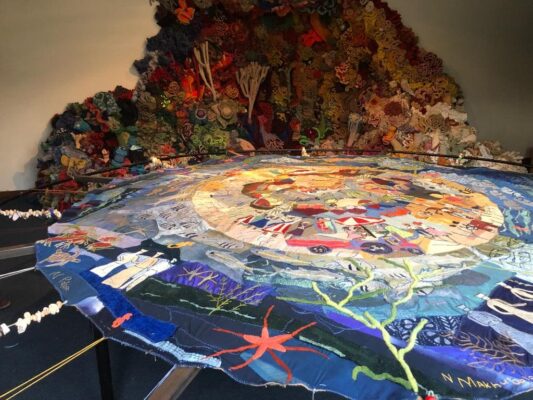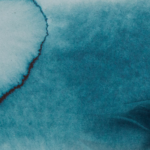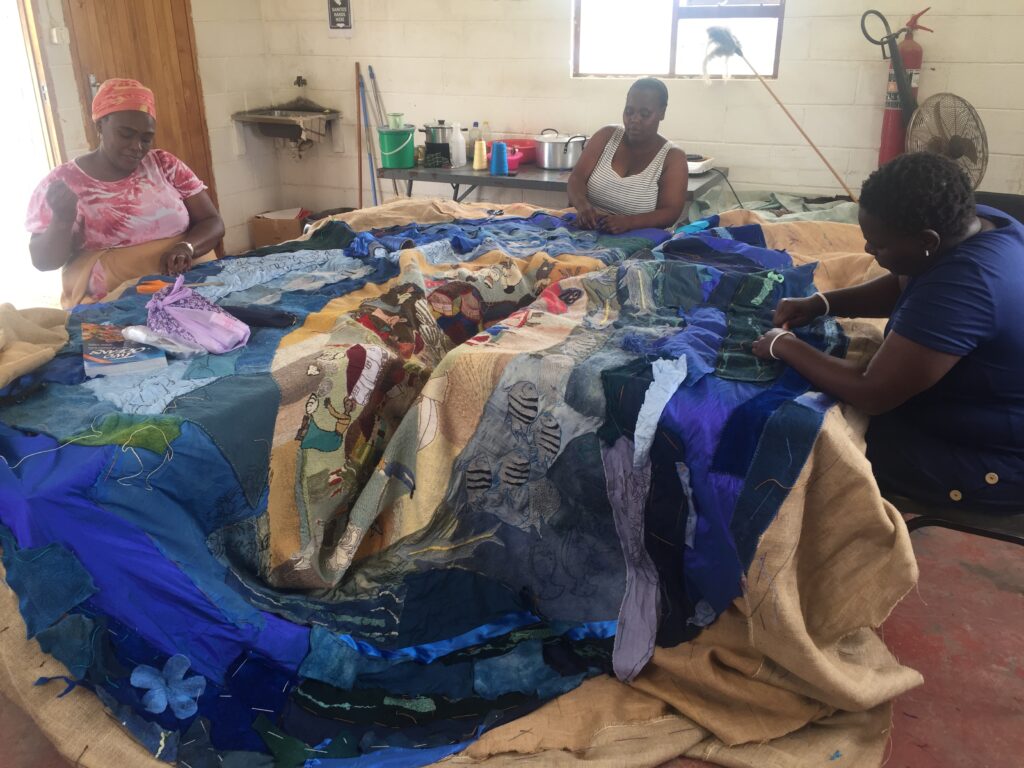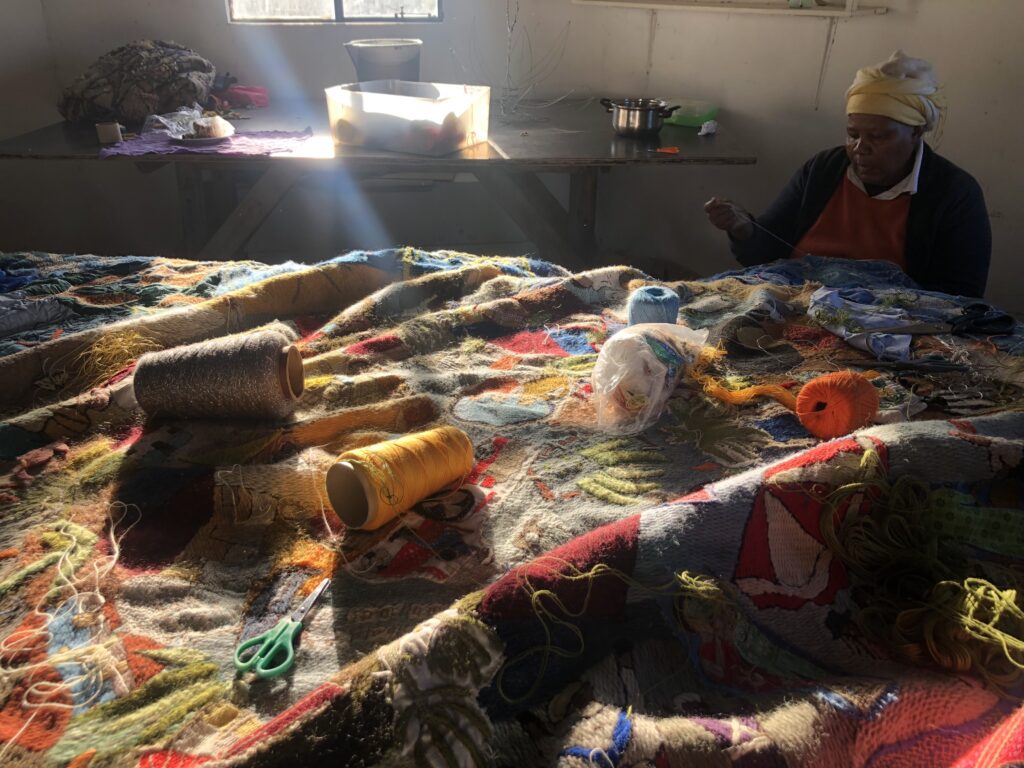Our Ocean is Sacred, You Can’t Mine Heaven

Photo: Dylan McGarry

Our Sacred Ocean, a monumental tapestry created by the Keiskamma Art Project, recently made its public debut as part of the South African National Arts Festival exhibition Our Ocean is Sacred, You Can’t Mine Heaven (23 June – 3 July 2022). Curated by Hub researcher Dylan McGarry, the exhibition was conceived during ongoing dialogue with academics, artists, scientists, traditional healers and knowledge holders, heritage specialists, activists, lawyers and passionate citizens who are working in solidarity to reframe narratives and policies regarding the ocean and its shared future. McGarry explains that the exhibition acted ‘as a radical archive of proxy artefacts of agency that hold meaning and evidence of intangible heritages of the ocean.’
Spanning 3.5 metres in diameter, the circular tapestry was displayed on a large rotating table to conceptually disrupt historical map-tables synonymous with colonial delineation and division of the African continent during the Berlin Conference (1884-1885). Not unlike the rush for Africa in the 1880s, today commercial oil and gas companies make similar maps of the ocean to extract and exploit shared natural resources. The tapestry challenges the notion of mapping as a means of control, instead highlighting connections and relationships that inherently depend upon the vitality of the ocean. In doing so, the tapestry asserts cultural and customary rights that are not widely understood or acknowledged in South African decision making and policy.
Production of the tapestry was facilitated by the Hub’s DEEP Fund – a collaborative programme of international research that supports community-based art projects that communicate emotional bonds with the ocean. Over the last 16 months’, the Keiskamma Art Project convened intergenerational knowledge exchange workshops and storytelling sessions to collect local memories, prayers and rituals that express ancestral connections to the sea. The intricately embroidered motifs of the tapestry reveal the centrality of the ocean to the Eastern Cape communities of Hamburg and Bodium. Alongside imagery that depicts the ocean as a sacred space for cleansing and healing to ensure sustained good-health and wellbeing, the sea is also represented as a space for traditional modes of fishing and harvesting to ensure food and financial security.
The tapestry emphasises the value and benefits of international research that embraces the principles of inclusivity, equity and respect. Our Sacred Ocean brought together diverse knowledge holders to give rise to marginalised voices that are underrepresented in conventional approaches to marine science and management. Hub researcher and DEEP Fund Programme Manager, Lisa McDonald, notes that ‘the tapestry visually advocates for the safeguarding of indigenous cultural heritage and conveys the importance of protecting customary relationships with the ocean.’
The Hub extends its warmest congratulations to the very talented artists involved in the creation of Our Sacred Ocean: Cebo Mvubu, Ndileka Mapuma, Thandazwa Mqali, Zukiswa Sikani, Nandipha Yona, Veronica Betani, Nombulelo Paliso, Fikiswa Madlingozi, Nomfundo Makhubalo, Nozolile Gedze. The Hub also acknowledges and sincerely thanks advisory elders who generously shared their knowledge: Nozeti Makhubalo, Nompumelelo Nompunga, Vivian Solwandle and Nokhanyiso Nompunga.


Dr Lisa McDonald is a Post-Doctoral Research Associate with One Ocean Hub, based at the School of Simulation and Visualisation, Glasgow School of Art.
Dr Dylan McGarry is South African Country Director with One Ocean Hub and Senior Researcher at the Environmental Learning Research Centre at the University currently known as Rhodes.